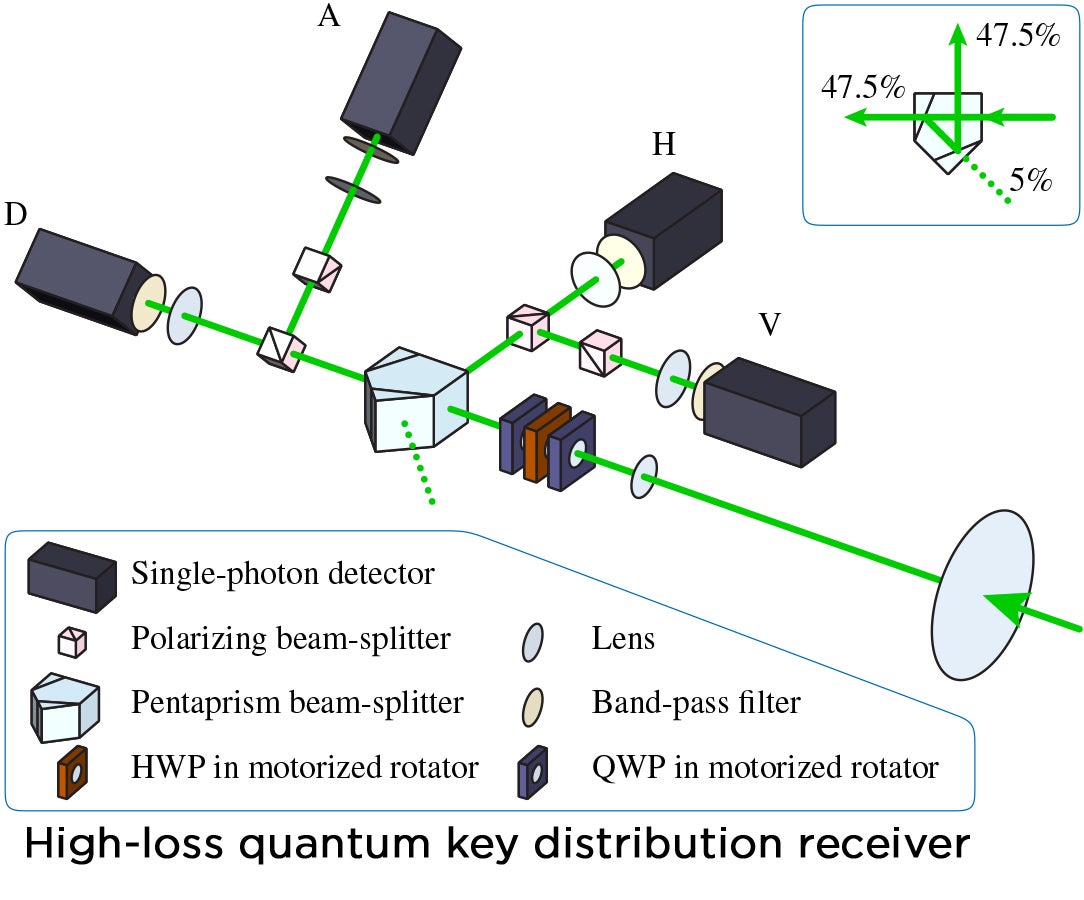University of Waterloo researchers performed a lab demonstration proving the feasibility of Quantum Key Distribution over a satellite uplink.
In an emulated environment for performing QKD, a team of researchers analyzed the impact of the optical loss that occurs between the photon source and the satellite receiver. They successfully generated a secure key using algorithms tailored for a satellite receiver, an important step towards extending the distance of ultra-secure communications.
QKD establishes a secure key using the quantum properties of photons transmitted between two parties. Any attempt to intercept the photons by an eavesdropper is detected; according to the laws of quantum mechanics, observing a quantum state disturbs the state, indicating the presence of an eavesdropper. With guaranteed security, the two parties use the exchanged photons to create an encryption key.
Current QKD systems using fibre-optic cables to exchange keys are limited to around 200 kilometres before too many photons are absorbed into the fibre and lost. Free-space, satellite-based QKD systems offer the best approach for extending this distance with current technology.

“We’ve shown experimentally that QKD is possible in this regime,” said IQC postdoctoral fellow Jean-Philippe Bourgoin. “This is a stepping stone to the overall solution to extending the distance of QKD.”
The results of this work, Experimental quantum key distribution with simulated ground-to-satellite photon losses and processing limitations, appeared in Physical Review A on November 30, 2015. Bourgoin and fellow IQC researchers Nikolay Gigov, Brendon Higgins, Zhizhong Yan (now at Macquarie University), Evan Meyer-Scott, professors Norbert Lütkenhaus and Thomas Jennewein in the Department of Physics and Astronomy, along with Amir Khandani of the Department of Electrical and Computer Engineering at the University of Waterloo contributed to the experiment.
Bourgoin, Higgins, Gigov and Jennewein were also involved in a second experiment aimed at overcoming the engineering difficulties of performing satellite QKD in the field, with Catherine Holloway, Christopher Pugh, Sarah Kaiser and Miles Cranmer. The IQC researchers exchanged a secure key in the first reported demonstration of QKD from a stationary transmitter to a moving receiver.
Single photons were sent from a transmitter at a fixed position, representing the ground station in an uplink, located on the roof of the Research Advancement Centre 1 building on the north end of the Waterloo campus to a receiver mounted on a moving truck, representing the satellite. The truck was traveling at an angular speed equivalent to the fastest speed of a 600 kilometre altitude satellite, a typical altitude for a low-Earth-orbit satellite. Correcting for polarization and time of flight, the team performed the key exchange and then executed the post-processing steps to extract a secure key, resulting in a successful demonstration of satellite QKD using a moving receiver.
“We are now improving our equipment and getting ready for an airborne QKD demonstration,” said Higgins, also an IQC postdoctoral fellow. “This will be a further step towards showing this technology is space-ready.”
The results of the demonstration, Free-space quantum key distribution to a moving receiver, appeared in the December 2015 issue of Optics Express.